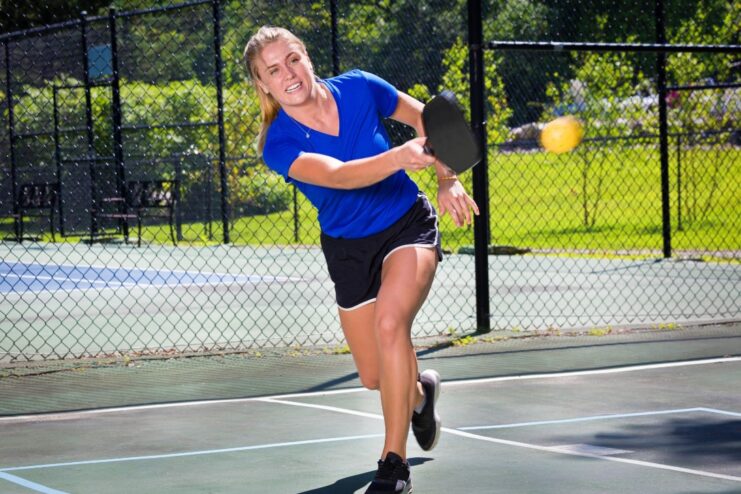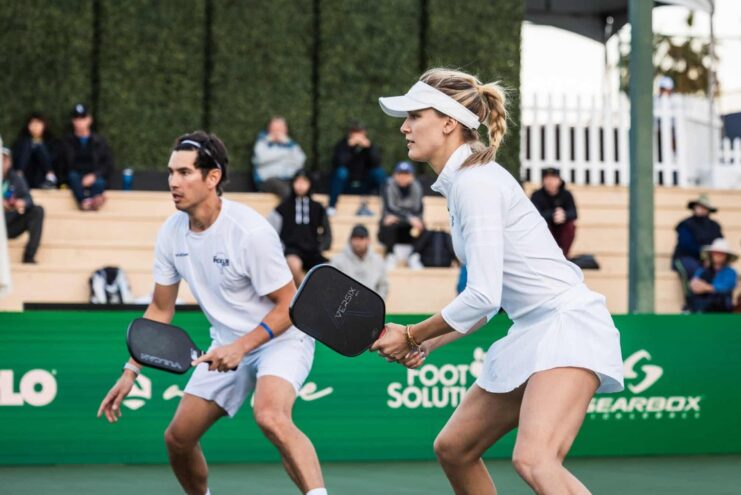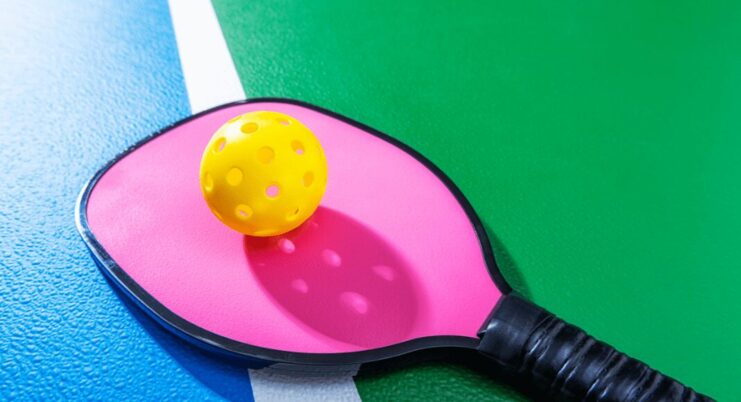While it seems like you’ve only been hearing about pickleball in the last few years, you might think the game itself is very new. However, it dates back to 1965!
Today, we’ll tell you about the meteoric rise that’s happened since then, including why it has become more popular than ever in recent years.
So, put on those pickleball hats, grab your paddles, and prepare to dive into the fascinating world of pickleball.
The Humble Beginnings on Bainbridge Island
According to the history outlined on U.S.A. Pickleball, in the summer of 1965, Congressional delegate Joel Pritchard and his friends Bill Bell and Barney McCallum found themselves on Bainbridge Island, Washington, with their families, bored and looking for some entertainment. To alleviate the boredom, they crafted a set of rules using a badminton court, a modified set of table tennis paddles, and a wiffle ball.
From there, pickleball was born.
The simplicity of the game, requiring minimal equipment and featuring easy-to-understand rules, made it an instant hit among the families. By the end of the weekend, everyone—including the kids—could play along, and the fun was palpable.
How It Got Its Name
It’s said that the game was named after the Pritchards’ family dog, Pickles, who would often run away with the ball during the early games. However, there are differing accounts of this cute anecdote.
Spreading Beyond the Backyard
Word of this new game quickly spread. Neighbors began to play, then friends of neighbors, and within a few short years, pickleball could be found being enjoyed at countless backyard gatherings across the United States. Its multi-generational appeal ensured nobody was left on the sidelines, including children and grandparents.

U.S.A.P.A. Brings Structure
In 1984, things got official when the United States Amateur Pickleball Association (U.S.A.P.A.) was founded. Dedicated enthusiasts saw the need to give a structured form to their passion project. The U.S.A.P.A. codified rules, promoted the sport, and provided resources to help new players and pickleball communities.
This was a vital step—it turned an activity some may have still viewed as merely a pastime into a sport with recognized standards and organizational support. It also marked the moment when pickleball began to be seen as an activity one could pursue competitively.
The Rulebook Emerges
With the formation of the U.S.A.P.A. came the need for a uniform set of game guidelines. These official pickleball rules helped do just that, setting the stage for more structured, competitive play. The rulebook covered everything from court dimensions and service rules to scoring and conduct on the court.
Players now had a definitive source to reference, reducing disputes and ensuring consistency no matter where the game was played. This was instrumental in transitioning pickleball from a family game to a sport where people could compete seriously.
National Championships Make Waves
Fast forward to 2009, and pickleball took another significant step with the first U.S.A.P.A. National Championship. Bringing together the nation’s top players, it wasn’t merely a gathering for those who loved the sport—it was a showcase of the incredible talent and competitiveness that had developed within the pickleball community.
This event captured the imagination of spectators and competitors alike, and the game’s popularity soared.

Pickleball Hits the International Stage
But the love of pickleball wouldn’t stay confined within the United States for long. The sport has since made its way across borders. Now, countries around the globe are adopting the game and putting their unique spin on it.
National and international tournaments now take place in a wide range of countries. Everywhere from Canada to Spain and India has been adding to the rich tapestry of the pickleball community.
Will Pickleball Be in the Olympics?
There’s now a movement advocating for the inclusion of pickleball in the Olympic Games. With the sport’s unprecedented growth and the increasing caliber of athletes participating in pickleball, many believe it’s not a question of “if” but “when” the game will debut on this prestigious international stage.
Technological Innovations Shape the Future of Pickleball
Today, you’ll find pickleball paddles made from advanced materials designed to improve performance, balls that can withstand various playing conditions, and attire crafted for agility and comfort. Each of these products signifies an industry that has sprung up to support and advance the game. The technology and innovation driving current-day pickleball are a far cry from the simple paddles and wiffle ball of its inception.
There are also all kinds of pickleball apparel you can now shop for, from hats to towels, shoes, bags, and much more. The best place to stock up on these items is known as The Pickled Palm—they have everything a pickleball player could want or need.

Riding the Rising Popularity Wave of Pickleball
In the past decade, pickleball has found its stride. Local clubs, online communities, and national organizations continue to nurture the sport’s growth. It’s not unusual to find pickleball courts in public parks or on school grounds, and the demographic of players has expanded immensely.
From its invention as a simple backyard pastime to a sport enjoyed by competitive play across the world, the game of pickleball has indeed come a long way. With innovations in equipment, a growing base of players of all ages, and the possibility of Olympic recognition, the future of pickleball shines bright.
Pick Up a Paddle Today
Never picked up a paddle before? Now’s the time to join the fun. Whether you play for leisure or have your sights set on a championship, pickleball offers something for everyone. It’s a story of a game that leaps over fences, crosses oceans, and keeps capturing hearts. Regardless of the climate you live in, there are indoor and outdoor options and always a welcoming community nearby.
What started as a way to cure a family’s weekend boredom has become a competitive sport with a global following. It is a tale of ingenuity, friendship, and, perhaps most of all, the fun of play.
Here’s to many more years of pickleball success—and who knows, maybe you’ll be cheering for your country’s team in the Olympics soon, paddle in hand, ready for the serve.

